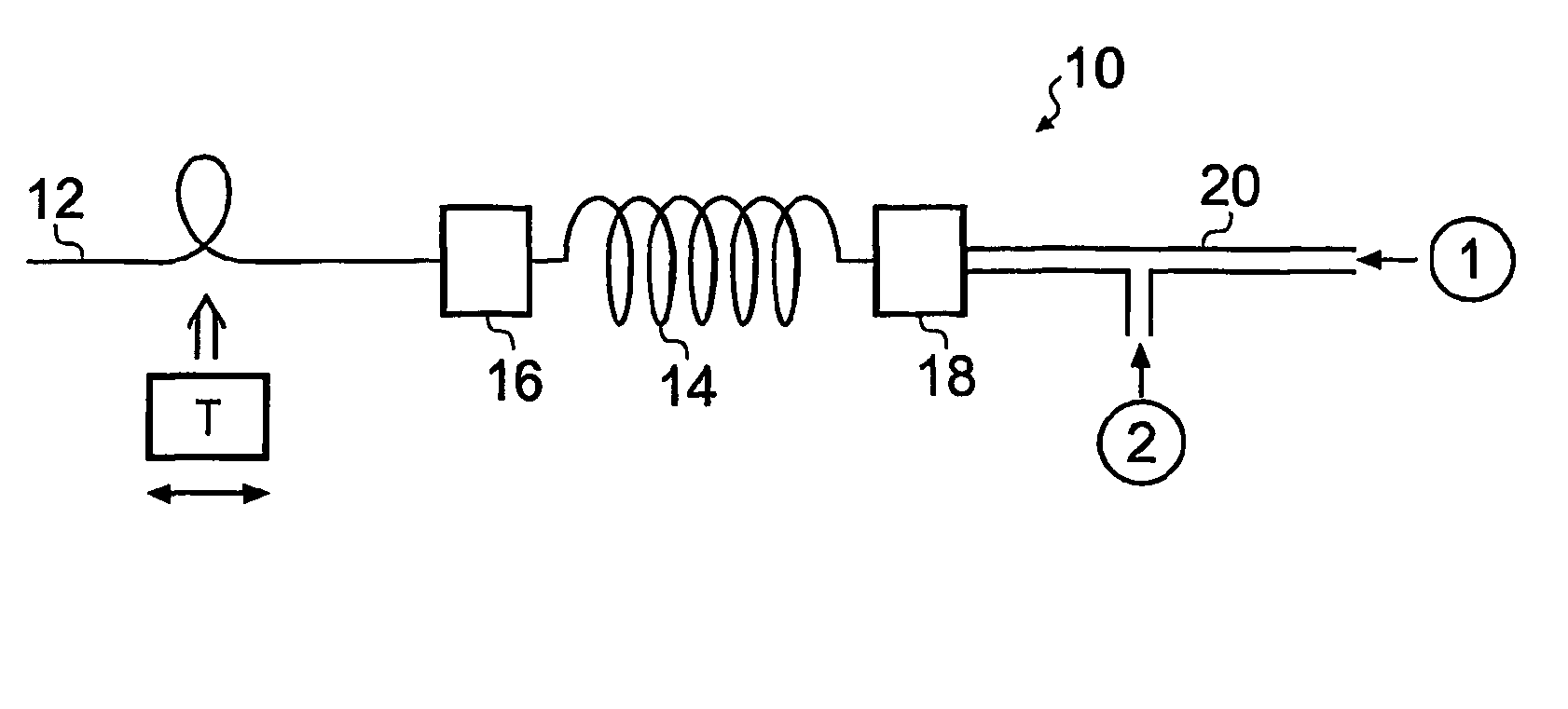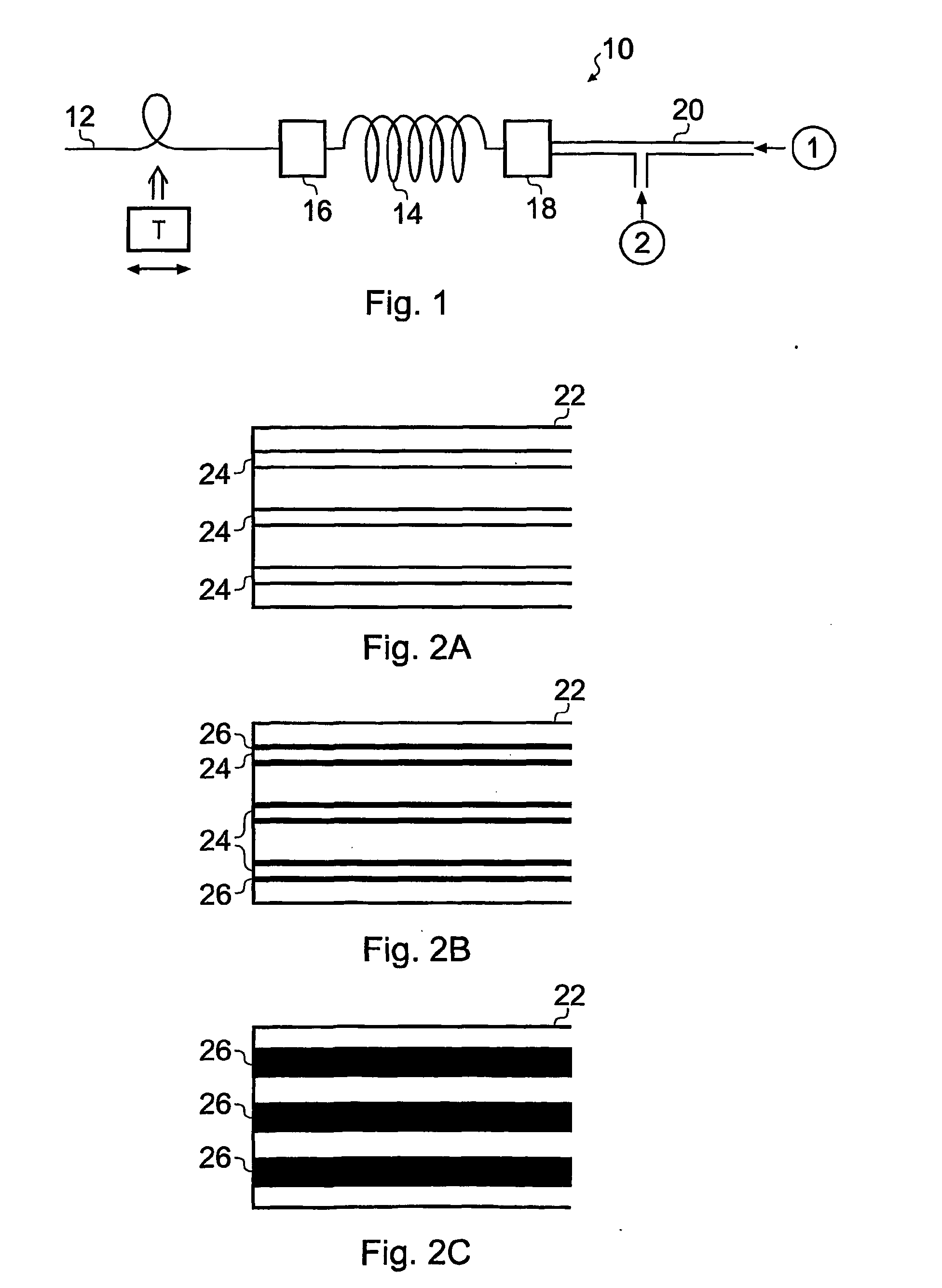Fabrication Of Metamaterials
a technology of metamaterials and fabrication methods, applied in glass making apparatus, glass shaping apparatus, electrical apparatus, etc., can solve the problem that further functional materials cannot be carried to the rest of the void, and achieve the effect of easy fabrication of complex metamaterials
- Summary
- Abstract
- Description
- Claims
- Application Information
AI Technical Summary
Benefits of technology
Problems solved by technology
Method used
Image
Examples
Embodiment Construction
[0049] A supercritical fluid is a substance that has been heated and pressurised above its critical point (defined by a critical temperature and a critical pressure). Above the critical point, the substance enters the supercritical phase, where it has properties intermediate between those of a gas and a liquid. Density is similar to that of a liquid, but viscosity, diffusivity and surface tension are like those of a gas, which are typically much higher than for a liquid. Therefore, a supercritical fluid can readily penetrate porous solids. Its solvating power can be that of a liquid, however.
[0050] This combination of properties means that supercritical fluids have proved popular as solvents, with the additional benefit that many are free from the environmental and health problems of traditional organic solvents. In this regard, they are widely used in extraction processes such as the extraction of caffeine from coffee beans. Also, the solvating properties allow deposition to be pe...
PUM
| Property | Measurement | Unit |
|---|---|---|
| Length | aaaaa | aaaaa |
| Pressure | aaaaa | aaaaa |
| Pressure | aaaaa | aaaaa |
Abstract
Description
Claims
Application Information
 Login to View More
Login to View More - R&D
- Intellectual Property
- Life Sciences
- Materials
- Tech Scout
- Unparalleled Data Quality
- Higher Quality Content
- 60% Fewer Hallucinations
Browse by: Latest US Patents, China's latest patents, Technical Efficacy Thesaurus, Application Domain, Technology Topic, Popular Technical Reports.
© 2025 PatSnap. All rights reserved.Legal|Privacy policy|Modern Slavery Act Transparency Statement|Sitemap|About US| Contact US: help@patsnap.com



